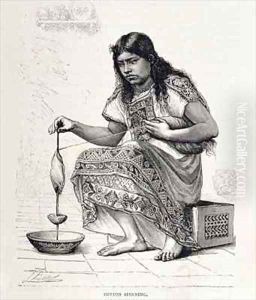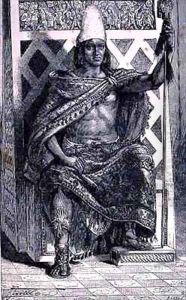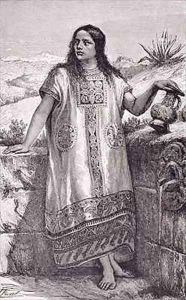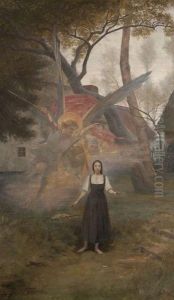Pierre Fritel Paintings
Pierre Fritel was a distinguished French painter and illustrator, born in 1853 in Paris, France, and passed away in 1942. His life spanned a significant period in French history, encompassing events such as the Franco-Prussian War, the Paris Commune, and both World Wars, which inevitably influenced his artistic output. Fritel is often associated with the Symbolist movement, although his work also demonstrates elements of Romanticism and Realism, reflecting the eclectic tendencies of late 19th and early 20th-century European art.
Fritel pursued his artistic education at the École des Beaux-Arts in Paris, where he studied under renowned teachers such as Alexandre Cabanel, a key figure in French academic painting. His style evolved over the years, initially grounded in the academic tradition but gradually incorporating more symbolic and allegorical elements. Fritel's subject matter varied widely, including historical scenes, allegorical figures, and, to a lesser extent, landscapes and portraits. He was particularly fascinated with epic themes and the grandeur of human history, which is evident in some of his most celebrated works.
Throughout his career, Fritel exhibited his works at various prestigious venues, notably the Paris Salon, where he gained recognition and accolades. His paintings were celebrated for their intricate detail, dramatic intensity, and the profound sense of narrative they conveyed. Despite his success, Fritel remained somewhat on the periphery of the leading art movements of his time, such as Impressionism and Post-Impressionism, sticking instead to his unique blend of realism and symbolism.
Fritel's legacy is that of a master storyteller through the medium of paint, who captured the complexities of human history and mythology with a profound depth and sensitivity. While he may not be as widely recognized today as some of his contemporaries, his work continues to be appreciated for its artistic merit and historical significance. The turn of the century was a period of great change and experimentation in the arts, and Fritel's contributions offer a unique lens through which to view the era's evolving aesthetic and philosophical landscapes.



